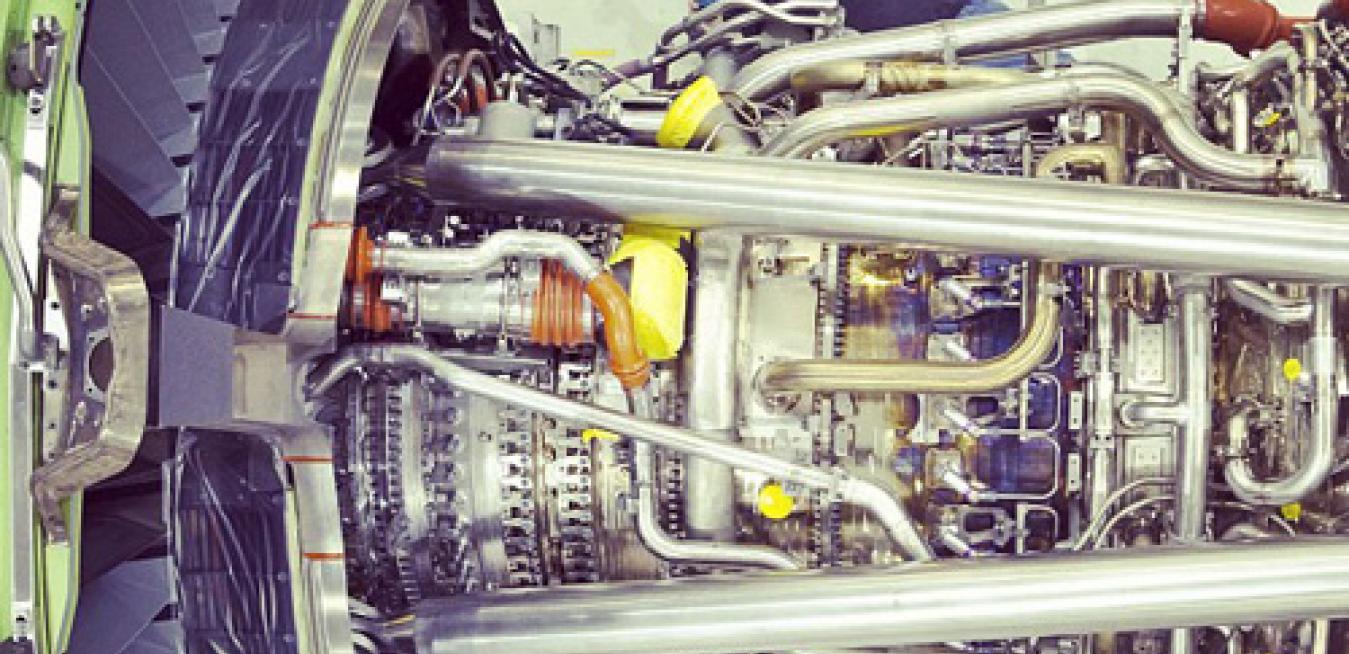Lufthansa became the first airline to select for its fleet Boeing’s next-generation 777X aircraft powered by GE’s advanced GE9X engines. The engines for the 34 planes are valued at more than $2.5 billion. The GE9X will use high-tech parts and materials like 3D printed fuel nozzles, fourth-generation composite blades, and special ceramic matrix composites.
The GE9X builds on more than two decades of GE research and development that involved hundreds of engineers and scientists exploring the boundaries of materials science, thermodynamics, and jet engine design. It will usher in a new generation of the GE90 engine family.
In 1990, GE launched the GE90, the world’s largest and most powerful jet engine for Boeing’s 777 aircraft. Until then, airlines could not fly wide-body planes across oceans and continents with just two engines under the wings. “The GE90 777 essentially opened the globe up to incredibly efficient twin-powered wide-body planes,” says David Joyce, president and CEO of GE Aviation.
The engine used fan blades made from a carbon fiber composite rather than metal for the first time in aviation history. “The design team woke up every morning thinking about the GE90 and went to bed every night thinking about the GE90 because it was such a radical change in design,” Joyce says. “No other jet engine manufacturer has composite fan blades in service today.”
The material allowed engineers to reduce the number of blades and build a larger engine. The fan’s 10-foot 8-inch diameter increased the amount of air bypassing the engine, improved thrust and boosted efficiency. “No one had thought about this, or if they had, it was not within the art of possibilities for most design teams,” Joyce says. (The blade that the GE team came up with was so comely that New York’s Museum of Modern Art included it in its design collection.)
But GE engineers kept improving on the blade. They reduced the number of blades from 22 inside the GE90-115, to 18 in the follow-up engine, the GEnx, developed for the Dreamliner. Joyce says that GE will be on its fourth-generation of carbon fiber blades by the time the GE9X enters service later in this decade. It will have only 16 blades even though their 11-foot diameter will be larger than the GE 90 fan. These innovations combined with a new composite fan case and lightweight ceramic materials inside the engine will shave hundreds of pounds from the machine, and improve its fuel efficiency.
The ceramics, for example, were developed by scientists at GE Aviation and GE Global Research. They can perform at temperatures as high as 2,400 degrees Fahrenheit – in hotter conditions than any alloy can handle. Engineers call the material ceramic matrix composites (CMCs). Like their carbon-fiber cousins, they are much lighter than the metal equivalent. CMC parts in the combustor and turbine will allow the GE9X to burn less fuel than the GE90-115B, which is already part of GE’s ecomagination portfolio. “There’s not a component in that engine that does not come through some form of very advanced technology,” Joyce says.
Engineers have been testing the materials and technologies for the new engine for several years. They ran fan-blade tests at the ITP engine-testing facility in the United Kingdom. This month they will assess the engine’s high-pressure compressor at a GE Oil & Gas facility in Massa, Italy.
GE has delivered more than 1,500 GE90 engines to Boeing. The aircraft maker is now using the GE90-115B engine exclusively to power the latest generation of its 777 planes, the 777-300ER, the 777-200LR and also 777 freighters. The Boeing 777 is the world’s most successful twin-engine, long-haul airplane.





